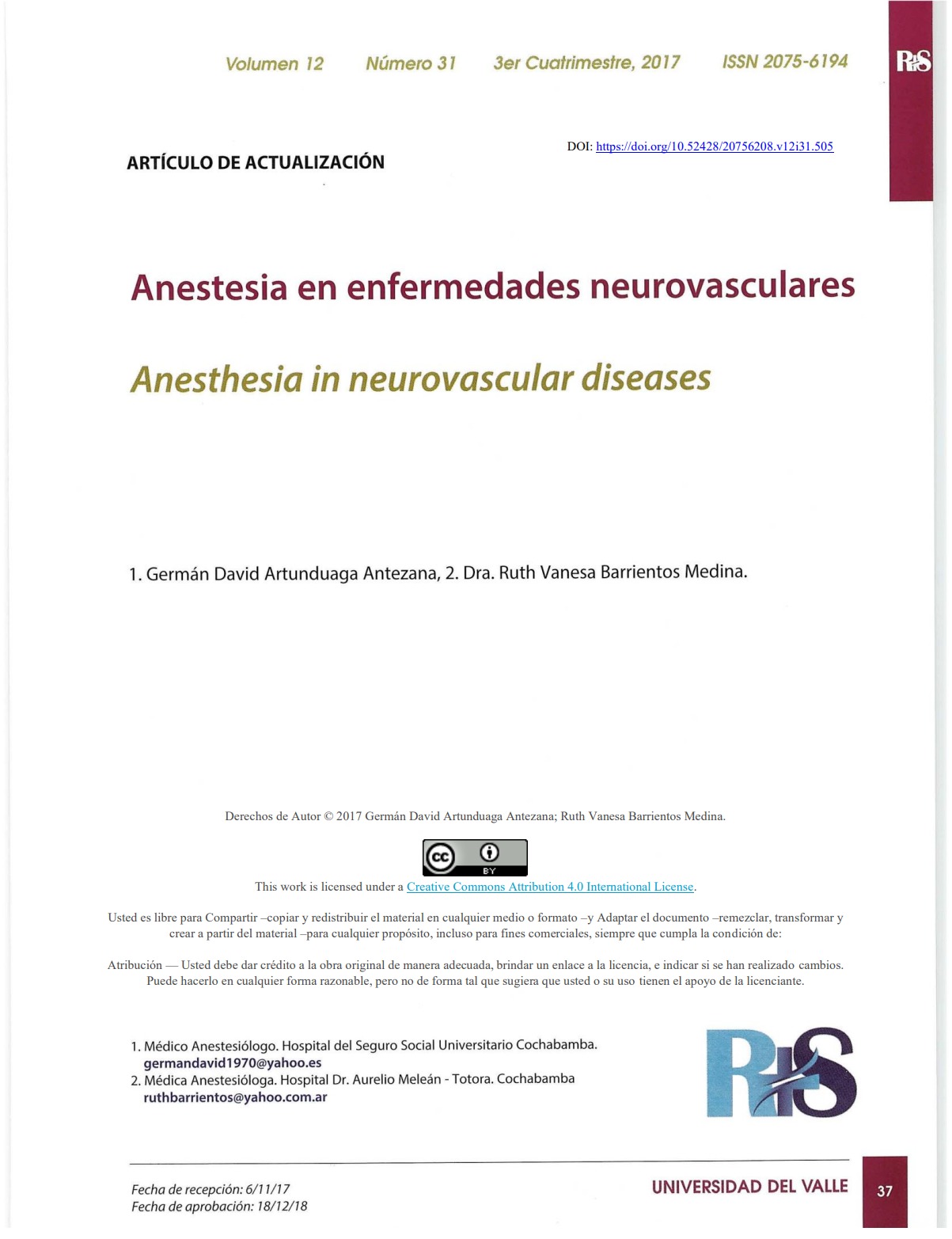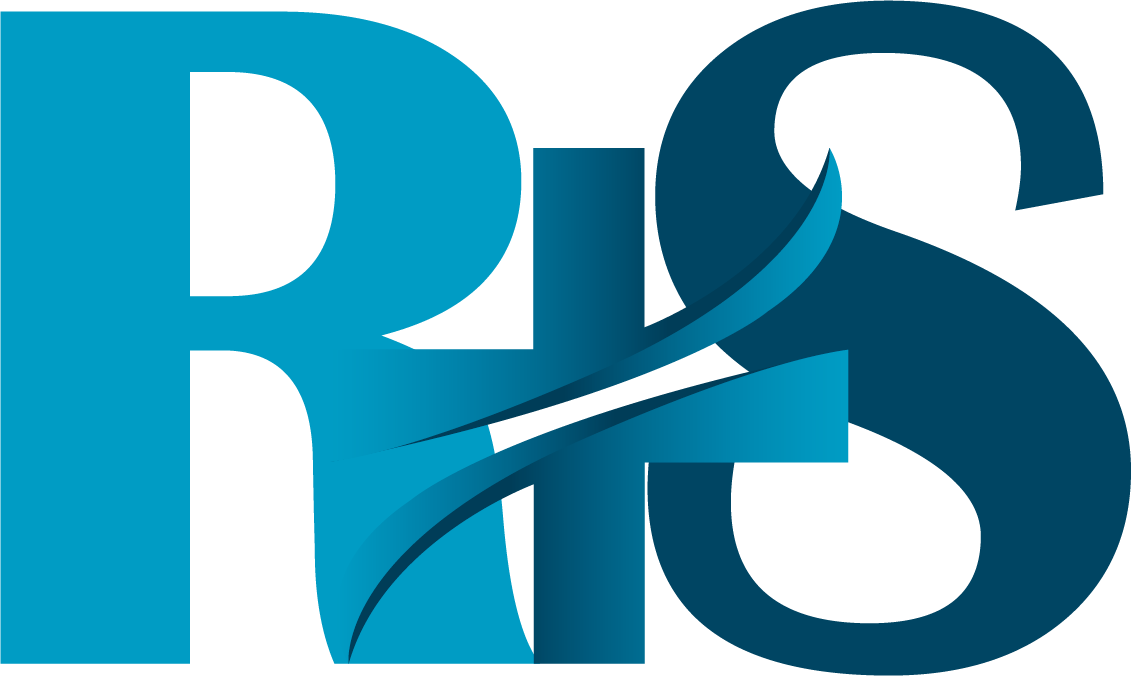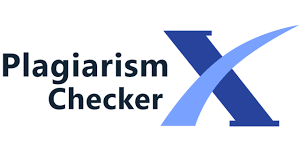Anesthesia in neurovascular diseases
DOI:
https://doi.org/10.52428/20756208.v12i31.505Keywords:
Neurovascular disease, Anesthesia, Surgical anesthetic riskAbstract
The neurovascular diseases are entities of genetic origin and with triggers such as arterial hypertension, smoking, alcoholism, diabetes mellitus, dyslipidemia among others. The most frequent neurovascular pathology is cerebral aneurysm and very rarely arteriovenous malformations.
The rupture of a cerebral aneurysm has a very high mortality at the moment of the rupture and those who survive have a high incidence of physical and socio-economic consequences for the patient and family members. The adequate anesthetic management can influence in improving the perioperative survival of these patients. Perioperative anesthetic monitoring includes sp02, expired C02 (etC02), ECG, noninvasive blood pressure (NIBP), neuromuscular relaxation monitoring, diuresis, invasive blood pressure (IAP), central venous catheter and central venous pressure. Anesthesia is based on a combination ofanesthetics (what is known as balanced genera/ anesthesia), although currently it is advisable to use a technique called Total Intravenous Anesthesia (TIVA) based exclusively on the administration of intravenous anesthetic agents such as propofol or thiopental sodium (hypnotic), remifentanyl or fentanyl (opiode) and atracurium or cisatracurium or rocuronium (muscle relaxant), administered in infusion pumps (manual or TCI) and orotracheal intubation.
The most important objectives are to maintain hemodynamic stability and adequate cerebral relaxation, as well as to facilitate adequate surgical exposure, rapid postoperative reczovery ifappropriate, or to pass the patient asleep and intubated to the intensive care unit in more complicated cases.
Downloads
References
Carrillo Esper, R, Castelazo Arredondo, JA. Neuroanestesiología y cuidados intensivos neurológicos. México: Editorial Alfil. Págs. 157 - 173. (2007).
Mineharu, Y, Inoue K, Inoue S, Yamada S, Nozaki K, Takenaka K, Hashimoto N, Koizumi A. Association analysis of common variants of ELN, NOS2A, APOE and ACE2 to intracranial aneurysm. Stroke 2006; 37(5):1 189-1 1 94.
Juvela S. Natural history of unruptured intracraneal aneurysm: risks for aneurysm formation, growth and ruptura. Acta Neurochir Suppl
Inagawa T. Risk factors for aneurysmal subarachnoid hemorrhage in patients in Izumo City, Japan. J. Neurosurg 2005; 102(1): 60-67.
Juvela S. Prehemorrhage risk factors for fatal intracraneal aneurysm ruptura. Stroke 2003; 34(8): 1852-1857.
Adrian W. Gelb. Perioperative Management of Neurovascular Diseases. Meeting- Refresher American Society of Anesthesiologist 2015. San Francisco, California. USA. (2015).
Niño de Mejía MC, Ferrer Z. LE. Neuroanestesia. Enfoque perioperatorio en el paciente neurológico. Colombia: Editorial Distribuna. Págs. 271 -283. (2005).
Cotrell JE, Patel P. Cottrell and Patel Neuroanesthesia. Sixth Edition. USA: Elsevier. Pag. 222 -247. (2017).
Carrillo Esper R, Castelazo Arredondo JA. Neuroanestesiología y cuidados intensivos neurológicos. México: Editorial Alfil. Págs. 157 - 173. (2007).
Niño de Mejía MC, Ferrer Z. LE. Neuroanestesia. Enfoque perioperatorio en el paciente neurológico. Colombia: Editorial Distribuna. Págs. 271 - 283. (2005).

Downloads
Published
How to Cite
Issue
Section
License
Copyright (c) 2017 Germán David Artunduaga Antezana y Ruth Vanesa Barrientos Medina

This work is licensed under a Creative Commons Attribution 4.0 International License.
Authors who publish with this journal agree to the following terms:
- Authors retain copyright and grant the journal right of first publication with the work simultaneously licensed under a Creative Commons Attribution License 4.0 that allows others to share the work with an acknowledgement of the work's authorship and initial publication in this journal.
- Authors are able to enter into separate, additional contractual arrangements for the non-exclusive distribution of the journal's published version of the work (e.g., post it to an institutional repository or publish it in a book), with an acknowledgement of its initial publication in this journal.
- Authors are permitted and encouraged to post their work online (e.g., in institutional repositories or on their website) prior to and during the submission process, as it can lead to productive exchanges, as well as earlier and greater citation of published work.






















